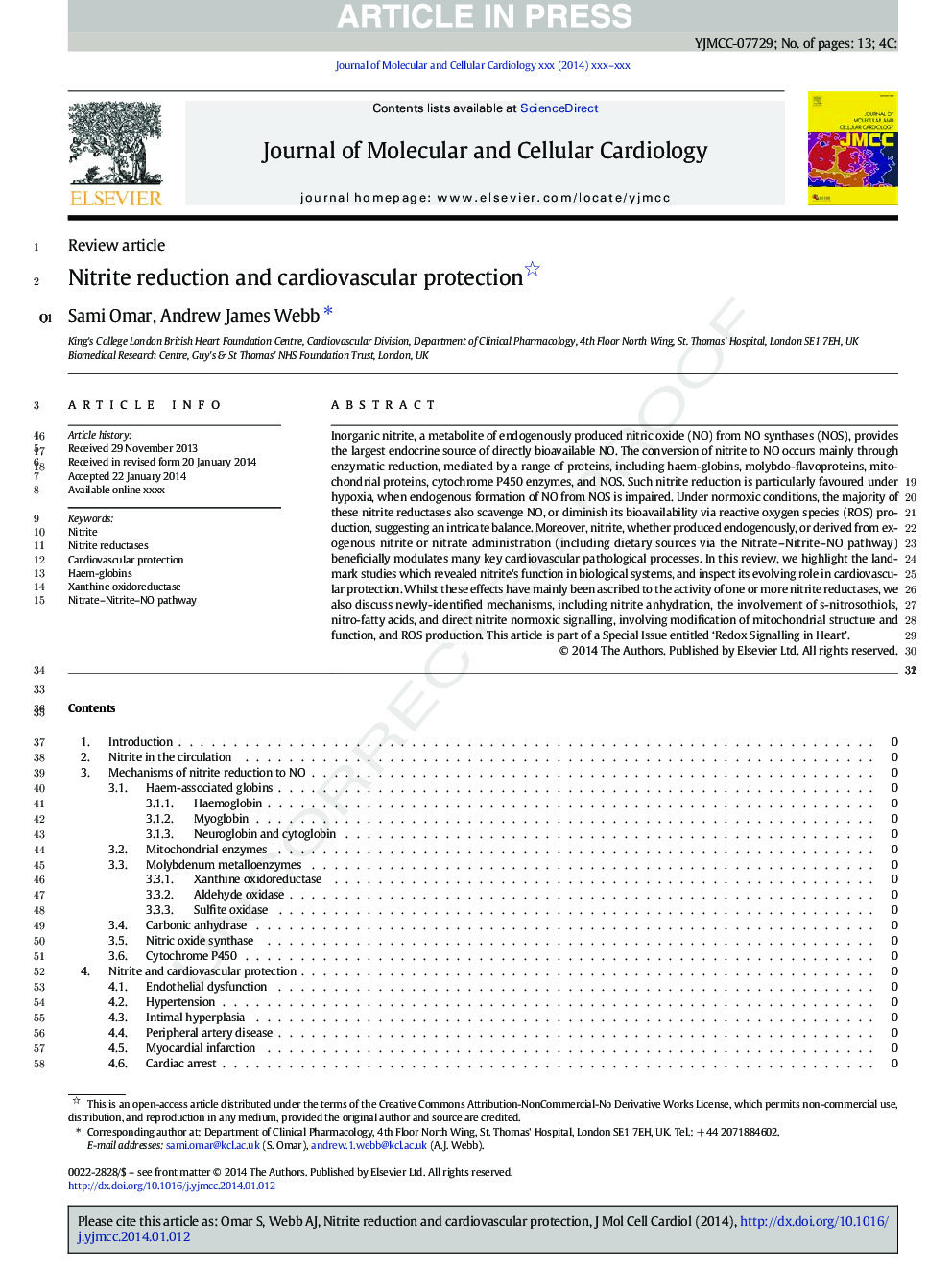| Article ID | Journal | Published Year | Pages | File Type |
|---|---|---|---|---|
| 8474789 | Journal of Molecular and Cellular Cardiology | 2014 | 13 Pages |
Abstract
Inorganic nitrite, a metabolite of endogenously produced nitric oxide (NO) from NO synthases (NOS), provides the largest endocrine source of directly bioavailable NO. The conversion of nitrite to NO occurs mainly through enzymatic reduction, mediated by a range of proteins, including haem-globins, molybdo-flavoproteins, mitochondrial proteins, cytochrome P450 enzymes, and NOS. Such nitrite reduction is particularly favoured under hypoxia, when endogenous formation of NO from NOS is impaired. Under normoxic conditions, the majority of these nitrite reductases also scavenge NO, or diminish its bioavailability via reactive oxygen species (ROS) production, suggesting an intricate balance. Moreover, nitrite, whether produced endogenously, or derived from exogenous nitrite or nitrate administration (including dietary sources via the Nitrate-Nitrite-NO pathway) beneficially modulates many key cardiovascular pathological processes. In this review, we highlight the landmark studies which revealed nitrite's function in biological systems, and inspect its evolving role in cardiovascular protection. Whilst these effects have mainly been ascribed to the activity of one or more nitrite reductases, we also discuss newly-identified mechanisms, including nitrite anhydration, the involvement of s-nitrosothiols, nitro-fatty acids, and direct nitrite normoxic signalling, involving modification of mitochondrial structure and function, and ROS production. This article is part of a Special Issue entitled “Redox Signalling in the Cardiovascular System”.
Related Topics
Life Sciences
Biochemistry, Genetics and Molecular Biology
Cell Biology
Authors
Sami A. Omar, Andrew James Webb,
